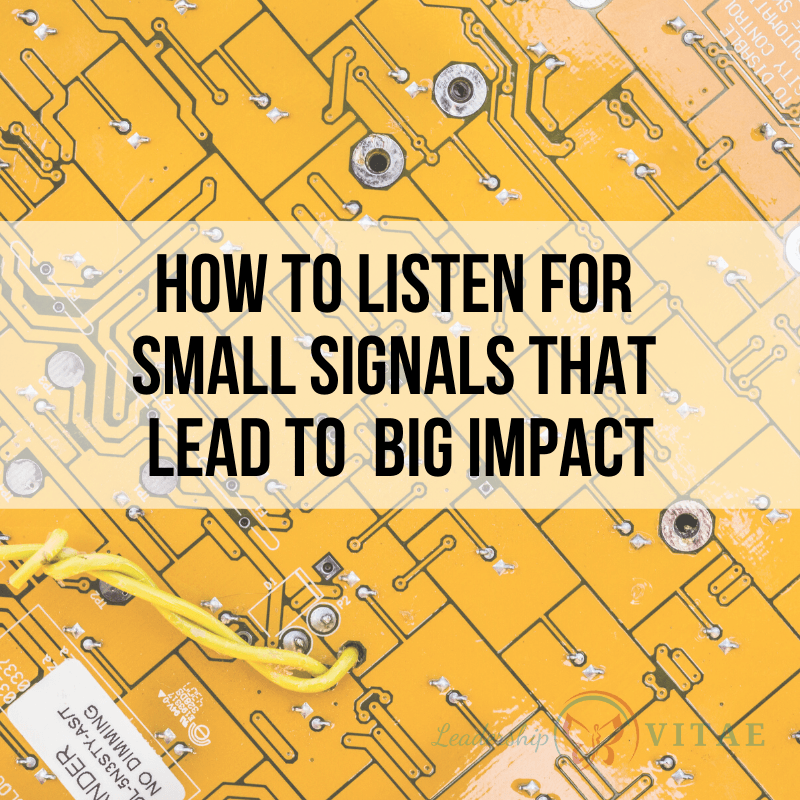
While popular culture presents leaders as confident, maybe sometimes arrogant, we are not immune to self-doubt. To wondering whether or not our particular approach or words land from moment to moment.
In the world of virtual everything, where many of our senses are cut off, it can be even more difficult to know. If we are not using video, we cannot read facial expressions. We may have difficulty “reading the room” or whatever other people dynamic skills we possess.
Add the heightened stress level most are experiencing due to a global pandemic, and the words, advice, style, or methods we used yesterday may or may not hit the mark.
Neutral news is not good news
The higher up in an organization you go, the less detailed information you’ll have. You’ll have broader scope, insight, and impact, but with less certainty or data supporting the types of decisions you have to make.
That’s true about the people in the organization, the work being done, and feedback about your performance. Leaders wield power, and some fear that feedback may result in that power affecting them negatively. In the current environment, that fear may be fed inadvertently.
Consider for a moment how you would have been engaged when you were back in the office. Were you provided challenging news? Asked for input or assistance? Maybe the sounding board for the occasional vent?
Are those things still happening? If not, it may be a quick sign that things are not okay.
We all tend to be busy on a normal day. In the current environment, there are likely more meetings to make up for lost “drive by” discussions and potentially the need to take care of a family at the same time.
It would be easy to take information at face value and move on, because our day demands it. However, that’s the quick way to only get surface level information. It might be reassuring to hear that everyone is “fine.” Step back for a second…what’s the likelihood that everything and everyone is “fine” in a global pandemic?
If you’re getting all positive or neutral information, or no longer being engaged in a way that you were previously, it’s time to step back and consider where you may need to engage.
Small signals hold big truths
If we are less likely to receive feedback and more likely to need it in the current environment, what can we do? We can listen intently for the signals we are getting.
Possible warning signs:
- A leader shares a bit about something challenging that arose, with the words “but I handled it” or “but it’s fine.” Dig a little deeper.
- When you ask “how are things going?” and the answer is “fine” in every conversation, ask again. Sometimes we need to ask twice so our folks know we mean it and genuinely listen.
- Once you hear how things are really going and ask “is there anything I can do help or making things easier for you right now?” and are regularly given a polite “no” or some variation of “I’m handling it”, the team may not believe you’ll actually help.
Examples of positive signals:
- A leader reaching out to request coaching for a challenging situation, demonstrating trust.
- Confirmation that a suggestion or coaching was helpful, with insight on how it was leveraged.
- Positive feedback from outside your organization, from someone that interacts with your team.
It doesn’t have to be a big flashing neon sign to get our attention if we learn to look for the small signals. The higher in an organization we are, by the time something is big enough to notice, we could have a massive problem on our hands.
Better to pay attention early and often to the small signs to prevent big issues.
A small signal of big impact
Leaders have self-doubt and we may not get many signals that things are going well. When we do get them, we should enjoy them.
During a conversation with some of my team members, we were talking about changes to a tool that’s fundamental to leading the team. It’s critical for me to justify resources and funding, and prioritize work. But I’m not the only person that uses it. The entire team does to manage their workloads.
I was asked for feedback on the tool so the team would know how they could make it better. I shared my thoughts, but then reminded them that since I’m not the only user, and not the most important one, to please not prioritize my requests.
One of my team members said “If I’m trying to make you happy, I’m doing it wrong.” We were on video, and I just kind of looked at him curiously. He said “you taught me that and it stuck.”
I laughed joyously, struck by the moment. I realized that something I believe in had been communicated in a way that resonated and stayed with him. It guided the way he engages on his products and the way he prioritizes customer needs.
In that moment, I received a small signal of feedback confirming that how I lead matters. That what I believe in is making its way into the team.
No rest for the weary
While that moment still causes me to smile, I know I can’t rest. I can be grateful for the small signals that tell me things are going well or better, but I have to be vigilant. All leaders do.
Even though we’re tired. Have our own stressors. Balancing our own work and family lives.
We can and should look for those small signals of how things are really going. Go out of our way to foster genuine connection and shore up trust in our relationships. Listen intently for subtle hints of opportunity.
There will be no return to normal. This is normal now. We will be a majority remote workforce for the foreseeable future, if not indefinitely. The world, and all of us, will be forever changed by what we are experiencing now.
Acceptance is powerful. We can accept this as our new normal and develop new habits regarding how to engage our teams and monitor performance. We can refocus on the small signals that tell us we need to adjust course. Investing in our leadership for our teams’ benefit can never be wasted.








